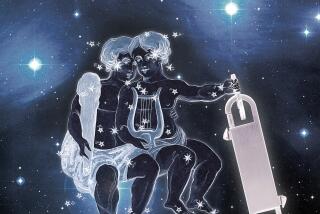His artful side, unmasked
- Share via
“RESTORING a house is like building a hot rod,” says ZZ Top guitarist and vocalist Billy Gibbons. “You’re always asking yourself: Is it ever really complete?”
For the past six years, the bearded Texas bluesman has been tuning up a 1926, three-story Spanish Mission manse just north of the rock clubs on the Sunset Strip. Gibbons’ casa is a classic red-tile-roof Hollywood adobe, one that he and English-born architect Malcolm Worby have re-imagined as a minimalist, gallery-like home and studio.
“Mr. Worby found his way to Santa Fe, where he developed a passion for the simplistic architectural values of the region,” Gibbons explains in a professorial manner that seems at odds with the songwriter of “Legs” and “Tush.” “His work is a melding of Southwestern and Mediterranean that seems to be fitting for early 20th century California architecture.”
It was a given that a certain Lone Star state of mind would influence the design, which stripped the house back to its bones -- the better to exploit its Texas-sized proportions.
“We decided design elements that might have been overlooked or covered up were supposed to be revealed,” says Gibbons, 56. He and Worby rebuilt thickly plastered walls and added viga-style ceiling beams and headers over fireplaces, arched doorways and built-in cabinets that display custom guitars and memorabilia. Cars are another love of Gibbons’, author of the coffee table book “Rock + Roll Gearhead.”
The big surprise in the home, however, is Gibbons’ collection of African artifacts. Ritual masks, spirit figures and fighting costumes are displayed reverently as sculpture. Tribal objects including carved wooden Senufo beds and woven cots serve as tables and chairs.
“These are largely functional and utilitarian items of day-to-day living, not particularly viewed as something to be signed, or dated,” says Gibbons, who traded in his legendary ZZ Top ten-gallon topper for a cap called an ashente, or prestige hat, by the Bamileke tribe of Cameroon. “What makes them attractive is that they have a gloss that reflects how much they have been used.”
Why the fascination with African art? “I believe that the music that I play was born in Western Africa,” says Gibbons, who with ZZ Top bassist Dusty Hill and drummer Frank Beard was inducted into the Rock and Roll Hall of Fame two years ago. “Wanting to be interpreters of that art form, we have always sought inspiration from these artifacts.”
It is a ZZ Top custom to place an African object near the doorway of their recording studio to remind the band of its musical inspiration. Gibbons brought that habit home, placing African currency that looks like metal sculpture in niches on the exterior walls of the house and flanking his front doorway with ceremonial wooden carvings.
The garden has an equally impressive sculpture, a totem pole bearing the face of Gibbons in full beard and, appropriately enough, cheap sunglasses.
Here, he explains his formula for upscale down-home design.
More to Read
Sign up for The Wild
We’ll help you find the best places to hike, bike and run, as well as the perfect silent spots for meditation and yoga.
You may occasionally receive promotional content from the Los Angeles Times.






